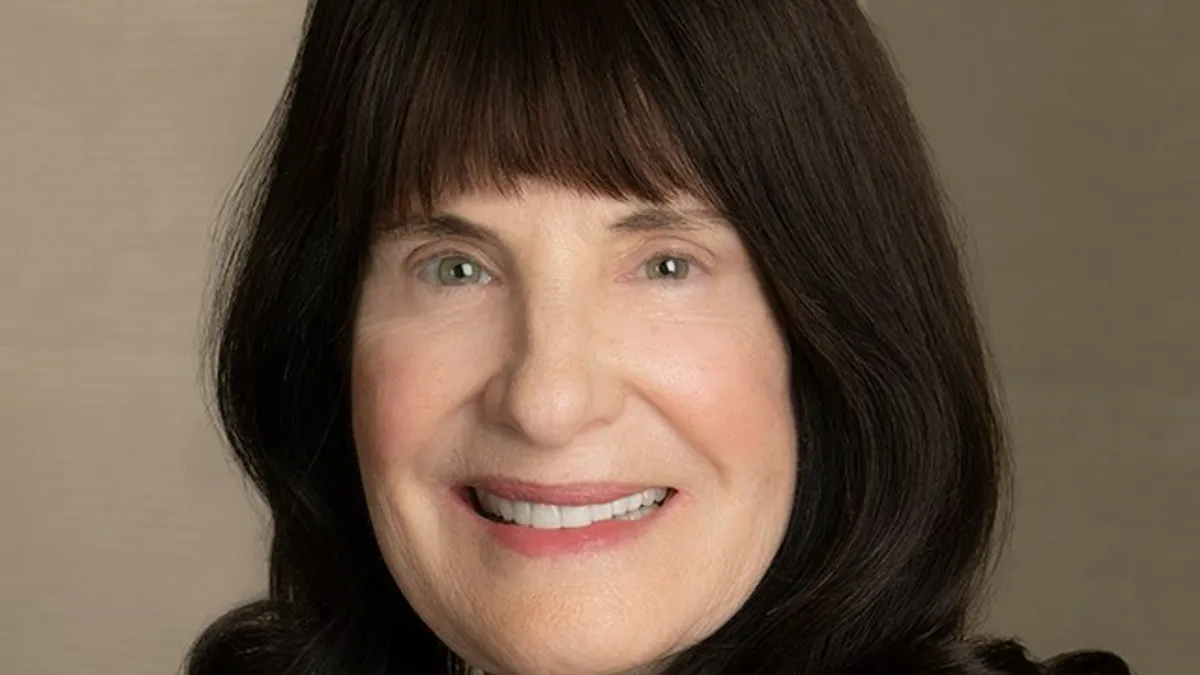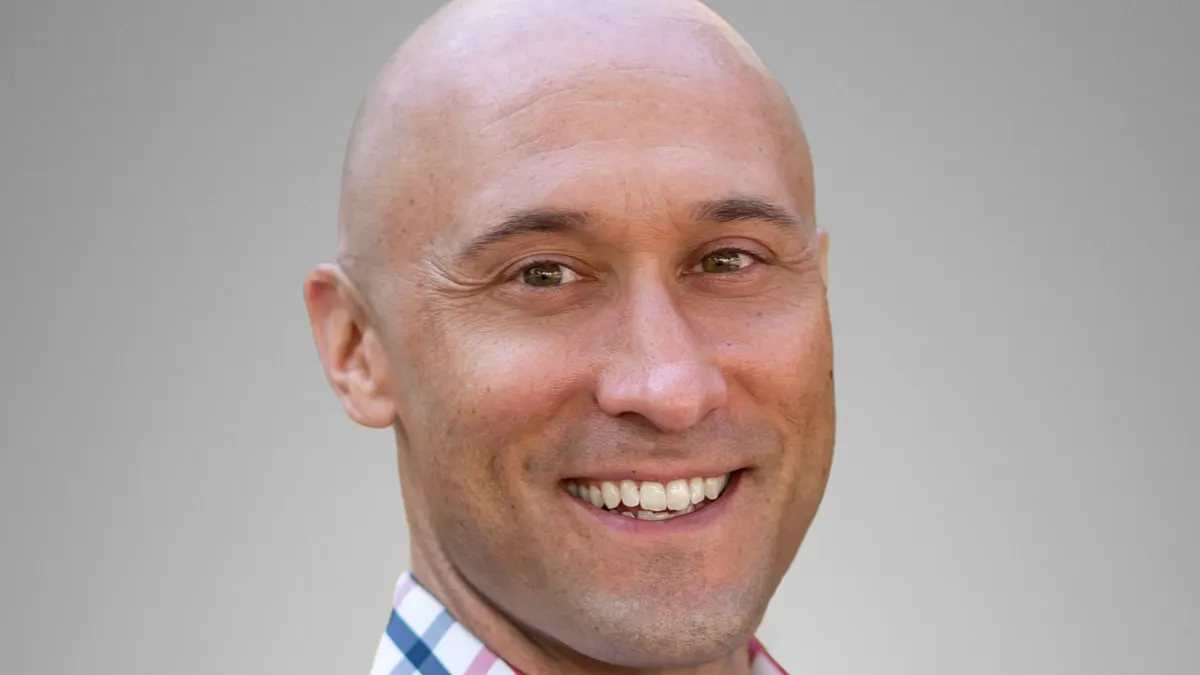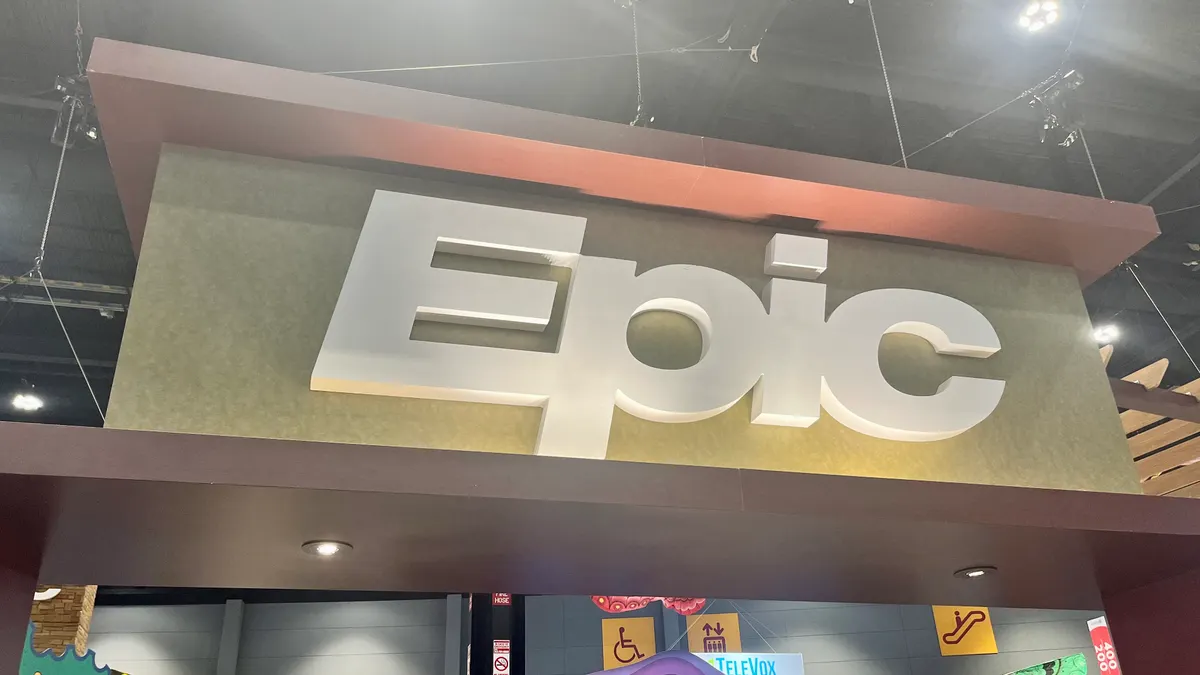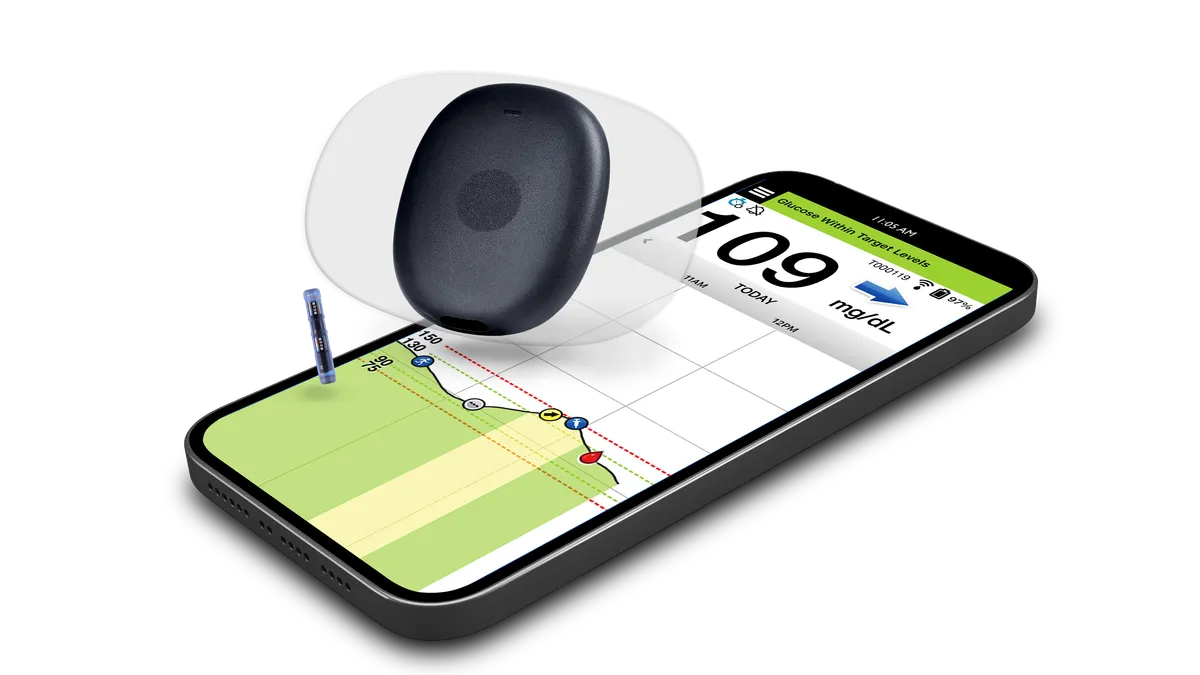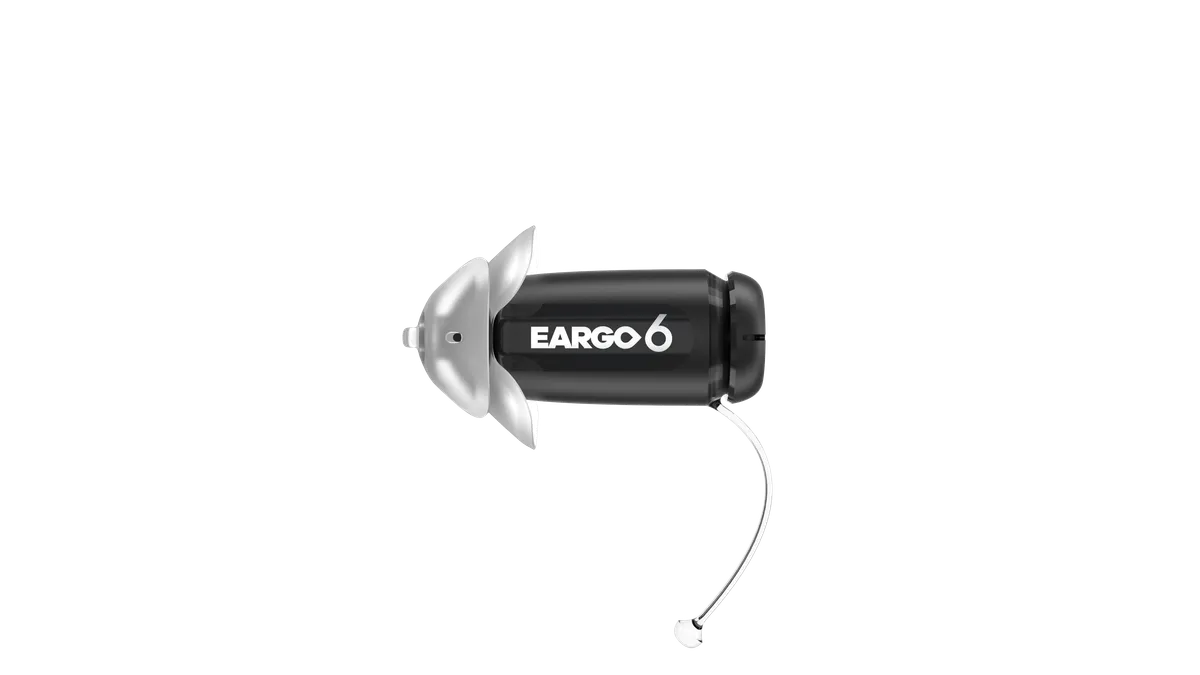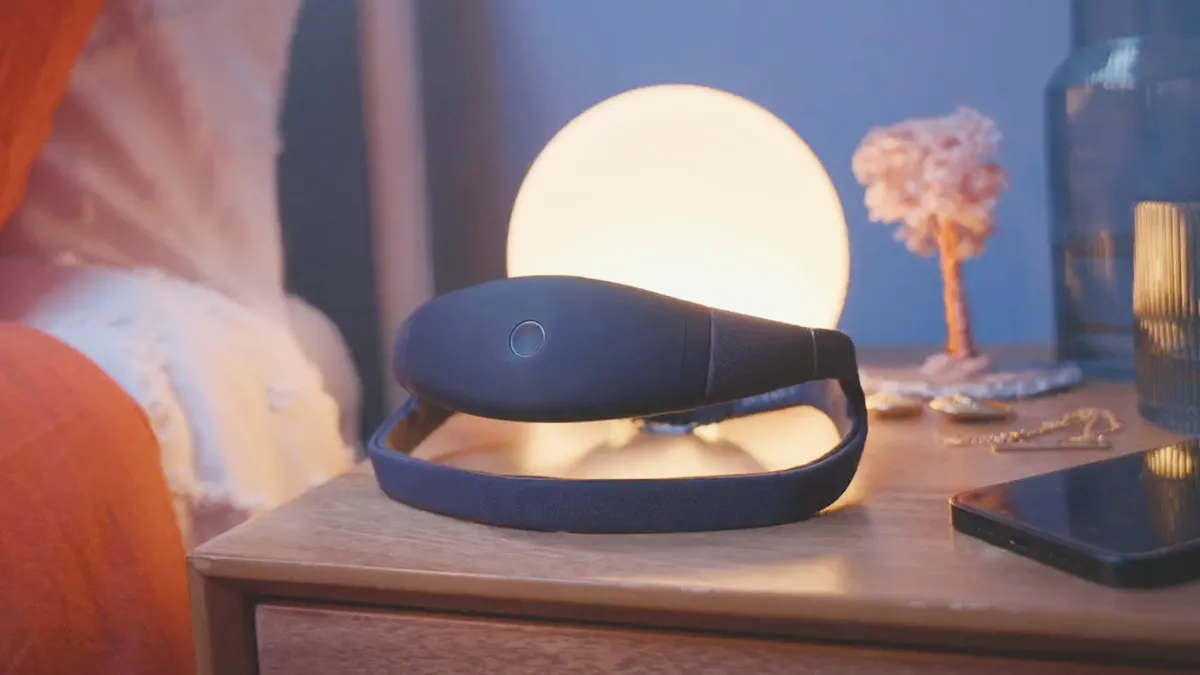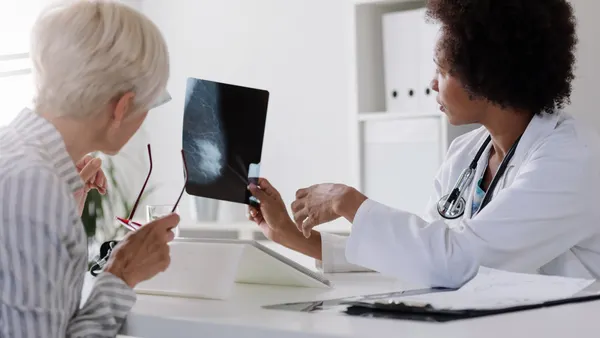Senseonics is taking a different approach to the development of continuous glucose monitors, devices that help patients with diabetes track their blood glucose levels and have grown in popularity across the world.
While CGMs from industry leader Abbott Laboratories last for 14 days and Dexcom for 10 days, Senseonics recently introduced a 180-day CGM and is developing a device that can last 365 days. Its sensors are also implanted in patients, unlike rival devices that are inserted beneath the skin.
Francine Kaufman, Senseonics’ chief medical officer, said that despite being much smaller than its competitors — Senseonics reported $3.7 million of revenue in the second quarter, while Dexcom reported $696.2 million and Abbott's FreeStyle Libre CGMs brought in about $1.1 billion — the company can compete in the market because patients are searching for new, longer-lasting devices.
Senseonics estimates the value of the global CGM market in 2022 at about $8.2 billion. The company forecasts the U.S. market to be an opportunity worth more than $14 billion annually as only about 40% of patients with Type 1 diabetes in the U.S. are using CGMs.
In February, the Food and Drug Administration approved the 180-day monitor, called the Eversense E3 system, and Senseonics announced the first implant of the device in the U.S. in April.
In June, the company said that European regulators awarded the device a CE mark.
Kaufman, who has worked as an endocrinologist for about 50 years, spoke about pursuing new patients, recruiting physicians to perform the procedure and working on current strategies in the diabetes tech market, including developing automated insulin delivery systems and expanding to patients with Type 2 diabetes.
This interview has been edited and condensed for clarity.
MEDTECH DIVE: How is the launch of the 180-day CGM going following the FDA approval and first patient implant?
FRANCINE KAUFMAN: Obviously, the pandemic has had an impact but the launch has been successful. We are only [offering patients] the new 180-day sensor now in the U.S. We have had no signals or issues at all, the insertion and removal procedures are essentially the same. So, the company is working to grow the number of physicians who can insert and prescribe the device to patients. The CGM market is expanding so much that patients have a choice between different products. And there are many people with both Type 1 and Type 2 diabetes who want that implanted sensor with a longer lifespan.
Who’s your market? New users of CGMs, or are you trying to win users away from your competitors?
We’re targeting both. The marketing campaign is focused on how different our product is from other products. We’ve been doing a lot of direct-to-consumer marketing and people really like the concept of not having to insert a sensor every seven or 10 or 14 days. So, we are certainly picking up new CGM users but also users of other CGMs who may come off it because they are not satisfied with other options.
The goal is to become, not the number one in the marketplace with CGMs, but to gain appropriate growth for this differentiated product. We want to grow our users, particularly with new CGM users. But a significant number of our users have always been those coming from another CGM because of things like taping issues, dexterity issues and self-inserting the devices.
How is the recruitment of physicians going, and what’s driving it?
I’ve been an endocrinologist for about 50 years, and economically, endocrinologists have always been at the bottom of the barrel of providers of specialty care. And the reason is that we don't have a procedure. Senseonics is now offering endocrinologists the opportunity to do a procedure. And there are a fair number of endocrinologists who are interested in learning how to do the procedure, learning how to fit it into their practice, and realizing that there’s reimbursement for it both from Medicare and from private insurers.
Of course, not everybody is going to want to learn something new, but the younger providers certainly are excited. That’s why reaching physicians during fellowships is important — the fellowship training programs that all other medical device and pharmaceutical companies do.
There are some who don’t want to learn it, but they will refer patients to other providers who know how to do the procedure. Along with endocrinologists, we’re training dermatologists, surgeons, physicians, nurse practitioners and a number of other physician categories to do the insertion and get certified.
Is Senseonics developing its CGMs to work as part of an automated insulin delivery system with insulin pumps?
We’ve already had conversations with insulin pump companies to be able to offer that, [and] we are finishing up some studies that we’ll need to do for the FDA. We are planning that sometime next year we will, hopefully, be getting approval. Most likely later next year.
Which pump companies have you spoken to?
We’ve met with everyone. I think all of them are exploring how these devices and the algorithm all fit together. There’s obviously a big push for interoperability, and we want to be part of that as well. We just need to gather the data, present it to the FDA and get through the whole process.
You have an even more ambitious product in the wings — a 365-day CGM. How is that going?
We do have sensors that clearly survive on the platform we have now, but it’s not to the number of sensors that we like to see. So, we’re developing a new platform. What this will enable is multiple sensing areas on the same small sensor, a change in chemistry and some changes in the algorithms.
We are looking to file the investigational device exemption application with the FDA this year and get the study started as soon as we can. It’s a significant change that will allow the sensor not only longevity, but we do believe we can get to a calibration once a week, which I think will be a game-changer. At that point, we really do believe we will expand our market considerably.
Diabetes technology companies, particularly Dexcom, have been touting the Type 2 opportunity. Is Senseonics planning to also expand to patients with Type 2 diabetes?
All of our accuracy clinical trials are for both the Type 1 and Type 2 populations. We do think that the longer life of our sensors presents a real future in the Type 2 population. We know that there are many patients with Type 2 diabetes that use our products now. We believe that we have a product that will be significantly important for patients with Type 2 diabetes who want that data for their healthcare providers to see what is happening with their patients.


